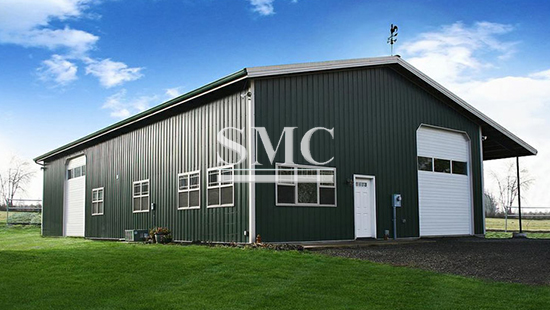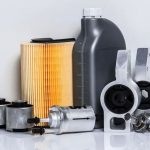Fastener
Fasteners: Due to the long life of roof panels and wall panels made of color-coated panels, the life of fasteners should be consistent with color-coated panels and accessories. In contrast, fasteners account for a small proportion of construction investment, and poor selection of fasteners does not benefit. Therefore, the selection of fasteners is important to consider the long-term performance and aesthetics of the building. The choice of color-coated plate fasteners is relatively wide. There are also self-tapping and self-drilling types made of various metal materials and fasteners such as carbon-free polymer gasket materials to meet steel plate fastening requirements. Fastener materials include carbon steel, 300 series and 400 series stainless steel and aluminum.
Carbon steel fasteners for special nuts such as cast zinc aluminum alloy, nylon and 300 series stainless steel. Fastener manufacturers can also paint fasteners based on roof and wall panel colors.
(Note: There are also carbon steel fasteners that have been electroplated or mechanically galvanized or cadmium, but the coating is too thin (≤0.5mil), it is recommended not to use it on color coated plates). Users should follow the recommendations of steel sheet and fastener manufacturers to apply fastener products. During installation, the fasteners should be tightened moderately to avoid over-tightening and tilting. Improper tightening and loose screws will cause water leakage. Water leakage at the fasteners will make the insulation film wet and cause corrosion under the film. Over-tightening will deform part of the board surface, causing water accumulation and accelerating corrosion.
Equipped with a fastening tool with a depth probe and a suitable RPM speed will help prevent the above problems and avoid the use of impact-type fastening tools.

Sealant: Double-round or three-round sealants are generally used to bond the auxiliary materials such as the roof board transfer part and the trim. Sealants are also used in sandwich panels and auxiliary seals. The sealant should be completely coated in the transfer part. The sealant coated on the surface of the steel sheet will be deteriorated by ultraviolet (UV) radiation. Roof slab makers will provide detailed designs of sealant coating on steel plate overlaps, auxiliary materials and sandwich panels. Can use butyl synthetic rubber, polyurethane, acrylic and silicone as the sealant. Neutral silicone resin is recommended.
The acidic silicone resin reacts with the steel sheet to produce a corrosive, by-product of vinegar. Polyurethane rubber (aliphatic urethanes) is recommended. Butyl synthetic rubber is suitable for areas without external exposure, such as inside joints. It is recommended to use acrylic acid with a solid content of more than 80%. Sealant manufacturers can provide detailed descriptions of different flexible, elastic, UV-resistant and weather-resistant sealant products.
Cutting edge: The cut edge exposes the substrate, plating, and coating to the environment, forming an electrochemical reaction zone to begin corrosion. Cutting edge corrosion occurs to the extent of the thickness of the steel plate, coating system, environment, and exposure angle, that is, vertical (wall panel) and inclined (roof panel).
Drip eaves edge: Due to the influence of rain and condensation, the incision corrosion of the drip eaves is the most serious. The initial sign of incision corrosion is the appearance of tiny bubbles visible on the lower surface of the cut edge. Over time, the bubbles spread to the entire cut edge. For some metal-plated products, bubbles expand at a constant rate until “red rust” occurs on the board surface near the cut edge, and the bubble expansion rate of color-coated products gradually decreases with time, so the corrosion resistance of color-coated boards is better than ordinary coated products.
Side: It is not recommended to cut strips or long cut edges for color-coated boards, because the cut edges are completely exposed to the environment. The building board manufacturer should customize the color plates required for roll processing to avoid cutting edge exposure. The sides of the full-width color-coated board are protected by the aluminized zinc coating and coating.
Roof slab and wall slab edges: Because there is no rain and condensation remaining, the corrosion of this part is weaker than that of drip rims. Full length panels should be used as much as possible to reduce the exposed edges of the cut edges.
Cut-to-length trimming: trimming is also required at doors and windows. For outdoor cutting, a clean, burr-free wall panel should be used around the wall surface. The trimming board should be used to protect the trimming. The hemming process keeps the cut edges out of sight.
Guest contributors are welcome at the Alloy Wiki.It is a weekly wiki and guide on alloy information and processing technology, while also about the vast array of opportunities that are present in manufacturing. Our team of writers consists of a Machining Material Supplier / Machinist / Tool and Die Maker, a Biomedical Engineer / Product Development Engineer, a Job Development Coordinator / Adjunct Professor, and a President and CEO of a manufacturing facility.
Link to this article:What are The Main Points of Installation and Use of Color Coated Board?(2)
Reprint Statement: If there are no special instructions, all articles on this site are original. Please indicate the source for reprinting:Alloy Wiki,thanks!^^


